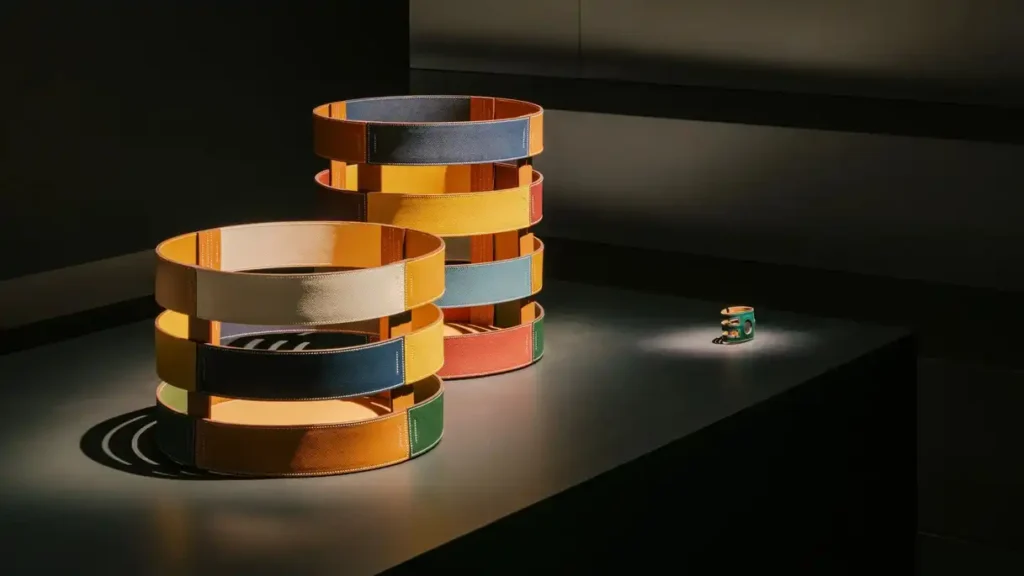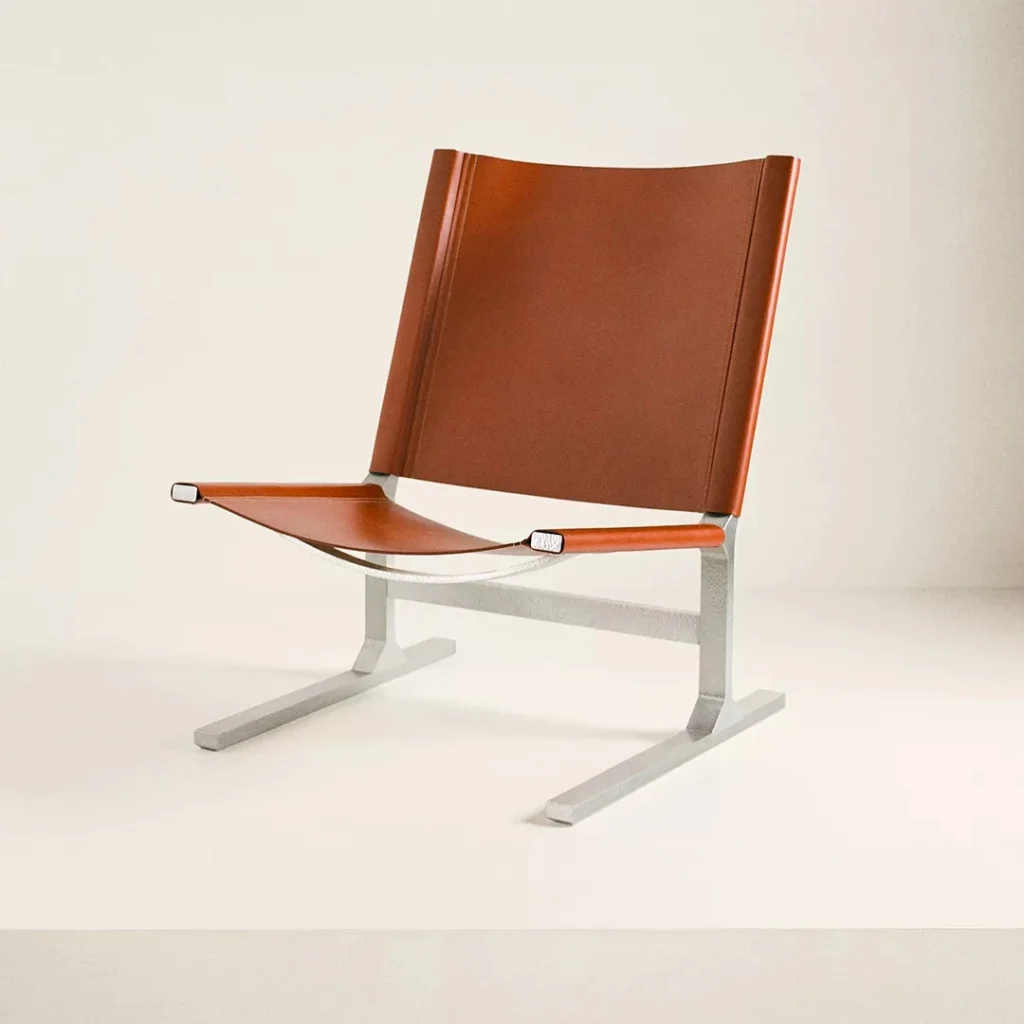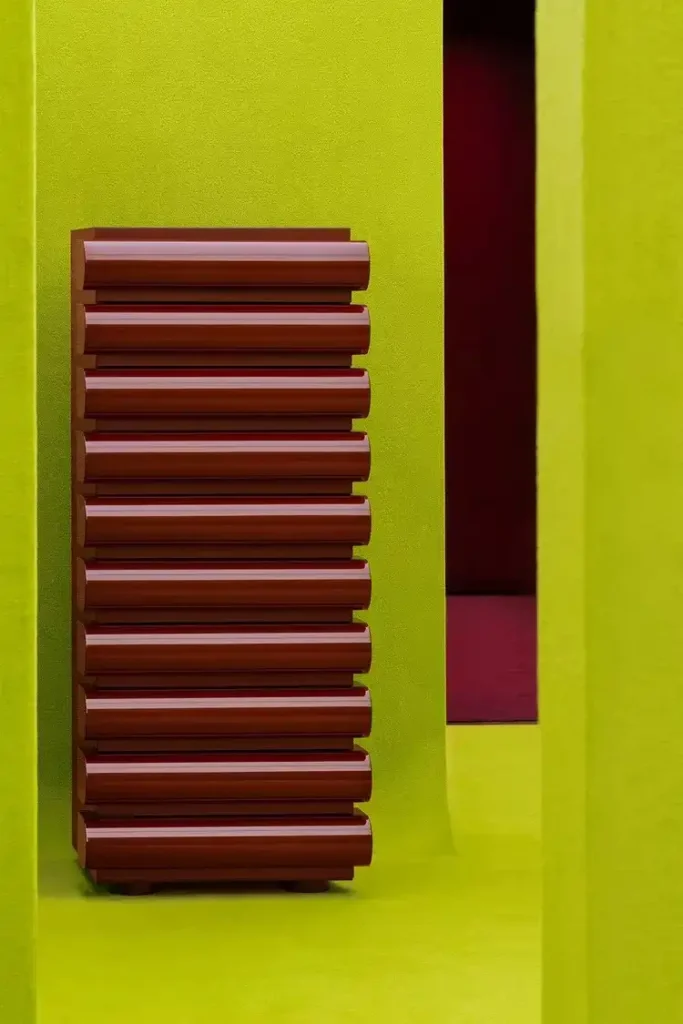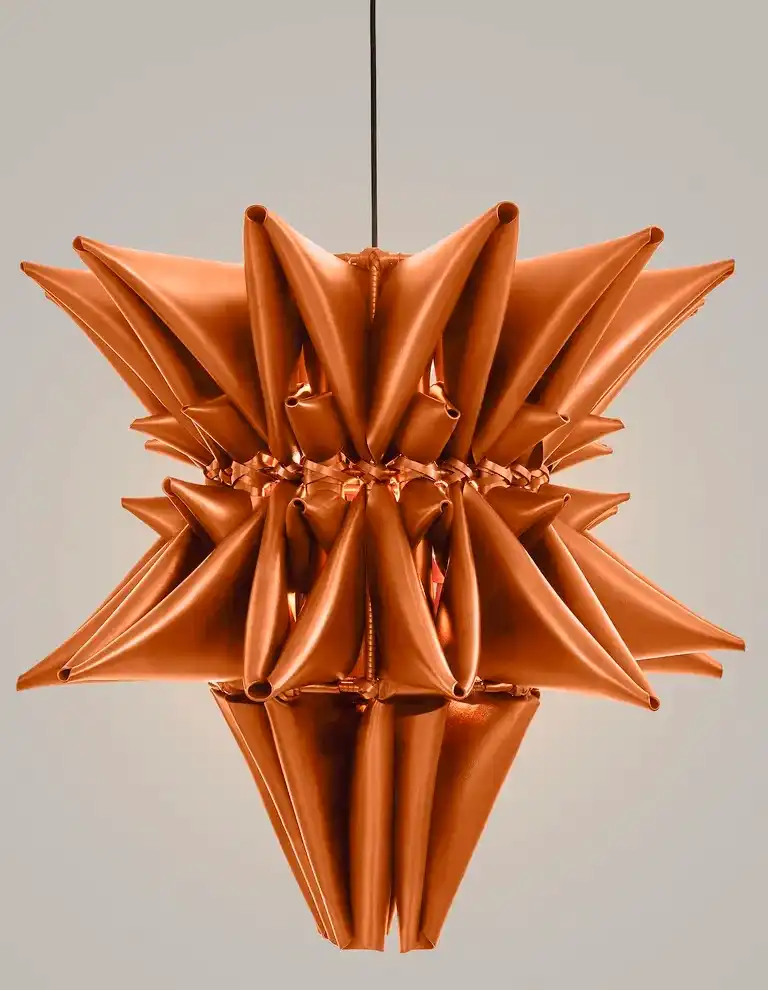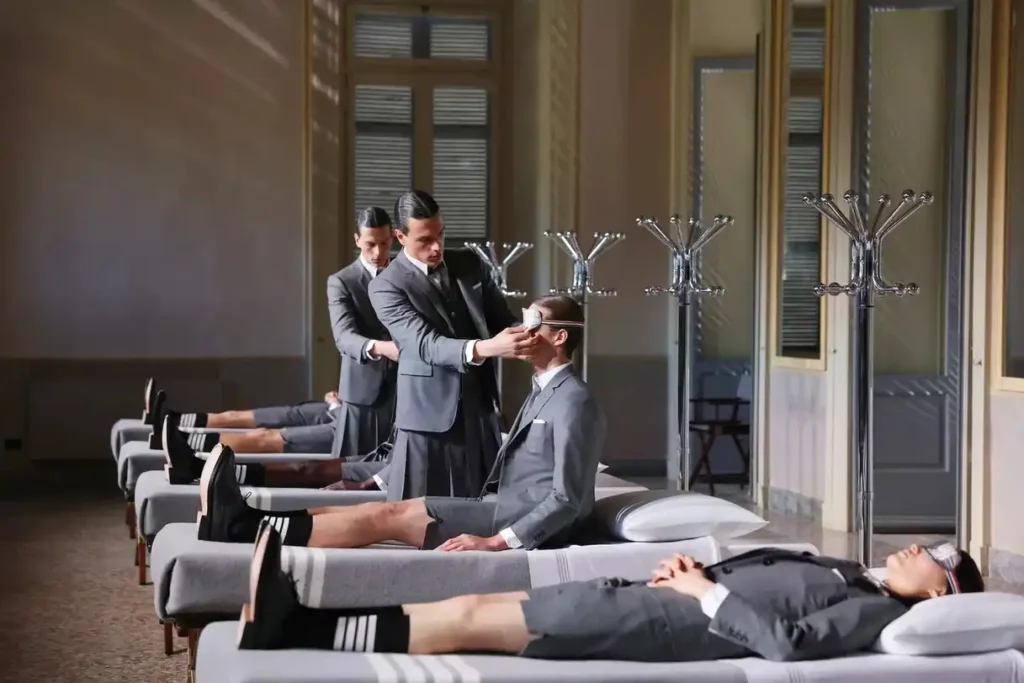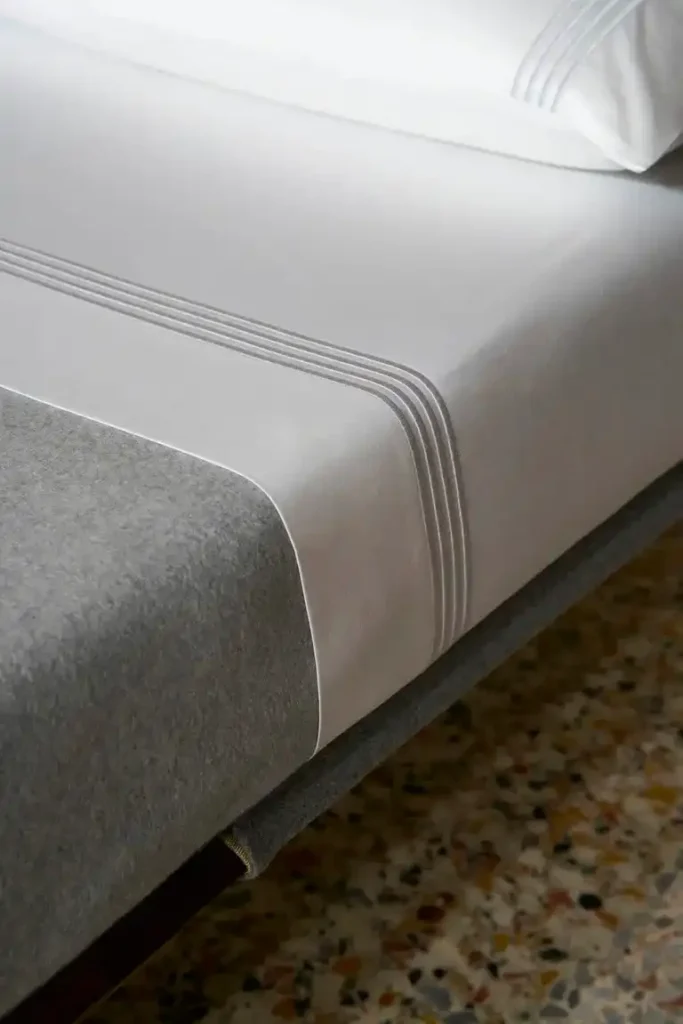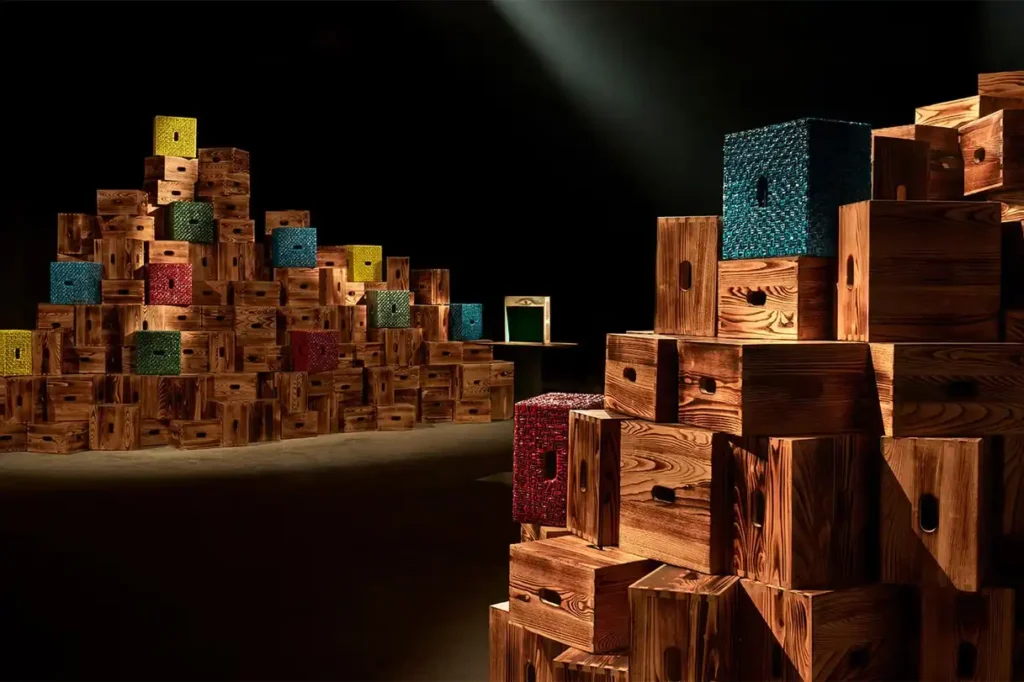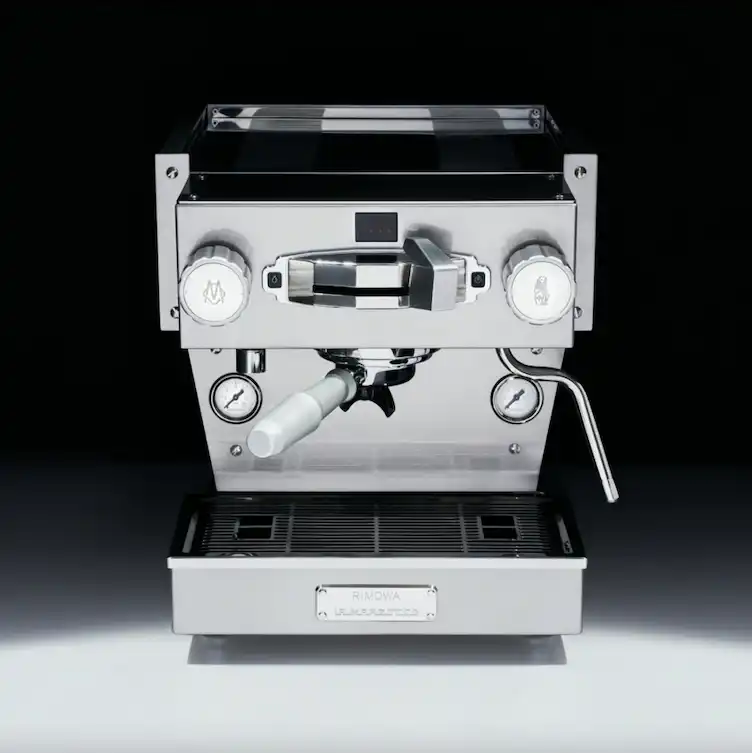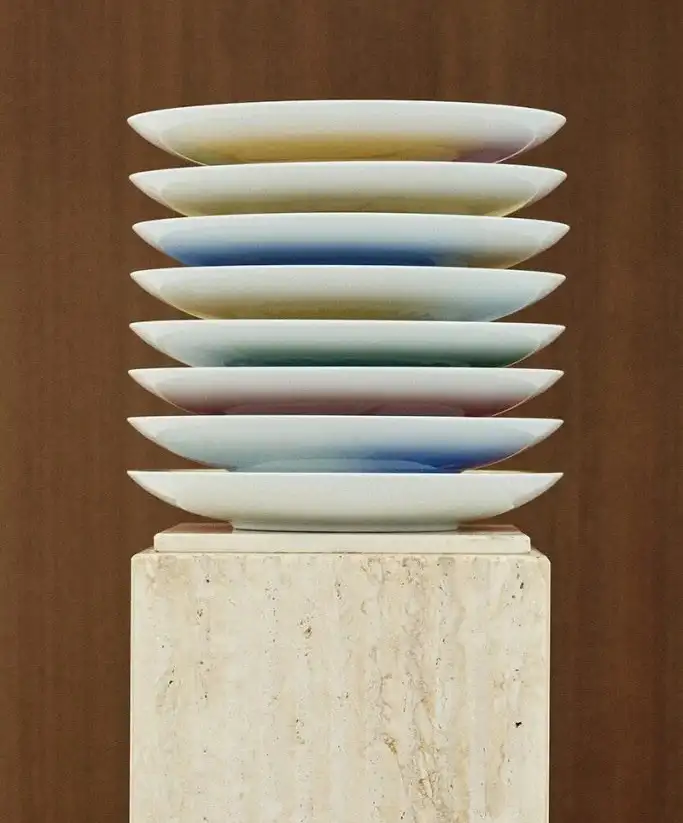This year’s Milan Design Week, held from April 15 to 21, solidified Milan’s status as a global design capital, featuring an expansive showcase of creativity and innovation across various districts of the city. The event demonstrated a deep appreciation for design heritage while actively embracing future technological advancements.
Milan Design Week was sparked by a dynamic panel discussion at Palazzo del Senato, hosted by Kohler. Esteemed speakers such as David Kohler, Samuel Ross, Sabine Marcelis, and Alessio Ascari engaged in a conversation about designing for an optimistic future, balancing the respect for design history with the adoption of cutting-edge technologies.
This year, Milan Design Week saw an unprecedented collaboration between the realms of high fashion and interior design, with several fashion giants stepping into the scene:
Hermès merges tradition with innovation, presenting a collection that bridges its storied past with contemporary design. The display features a mix of natural materials like wood, stone, and slate arranged to recall the iconic design of a jockey’s silk jersey, a nod to the brand’s equestrian roots. Highlighting the collection are the elegant Diapason d’Hermès armchair and exquisitely crafted lamps and dinnerware, all embodying Hermès’ signature refinement and timeless appeal.
In Gucci’s ‘Design Ancora’ exhibition at its flagship store in Milan, the brand presents a curated selection of iconic Italian design pieces, each reimagined in the vibrant Rosso Ancora cherry red chosen by creative director Sabato De Sarno. The display, co-curated with Michela Pelizzari and designed by Guillermo Santomà, includes standout pieces like Mario Bellini’s Le Mura sofa and Tobia Scarpa’s Opachi vase, celebrating Milan’s rich design heritage.
Loewe showcased its first-ever lighting installation, curated by Jonathan Anderson and featuring works from alumni of the brand’s Craft Prize. Held at Palazzo Citterio in the Brera Design District, the installation included unique lighting pieces by 24 artists previously supported by Loewe. These designs, which utilized materials ranging from horsehair to twisted mulberry-tree paper, marked the artists’ initial foray into lighting design, contributing to the distinctiveness and originality of the showcase. Notably, the exhibition was a testament to Loewe’s commitment to preserving and promoting exquisite craft techniques from around the globe.
Thom Browne introduced his new homeware collection in collaboration with Frette, titled Time To Sleep. The collection, showcased in a unique performance where models dressed in Browne’s signature uniforms prepared for sleep, features an array of items including sheets, blankets, robes, and towels. Crafted from Frette’s luxurious cotton sateen and wool-cashmere blend, each piece is elegantly detailed with Browne’s iconic four-stripe insignia. This presentation was not only a debut of new products but also an artistic expression challenging conventional views on public attire and private comfort.
Bottega Veneta, in collaboration with Cassina and Fondation Le Corbusier, presented a new iteration of the LC14 Tabouret Cabanon. Under the creative direction of Matthieu Blazy, this minimalist stool, originally designed by Le Corbusier for his cabin on the Côte d’Azur, has been re-envisioned. The design maintains its celebrated simplicity and functionality but introduces new finishes including a traditional charred wood and a luxurious leather adorned with Bottega Veneta’s renowned Intreccio weave. This modern take not only highlights the stool’s functional features, such as oblong handle openings and dovetail joints but also integrates a color palette inspired by the natural surroundings of Le Cabanon.
Rimowa and La Marzocco, a Florence-based leader in handmade espresso machines, have collaborated to create a limited-edition espresso machine called Linea Mini. This unique appliance mimics Rimowa’s iconic grooved aluminum suitcase design, incorporating artisanal elements such as aluminum hot water taps and knobs, each adorned with the monograms of both brands. This fusion of luxury travel aesthetics with high-end coffee-making technology promises to make the Linea Mini a coveted item among enthusiasts.
Saint Laurent pays homage to Gio Ponti, one of Italy’s design legends, with a curated exhibition of tableware. Creative director Anthony Vacarello has reissued a collection of hand-painted porcelain plates, originally created for La Villa Planchart in Venezuela, a Modernist architectural gem designed by Ponti in 1953. This collection, known as the Villa Planchard Segnaposto, features motifs like the sun, crescent moon, polar star, and the letter “A”, representing the villa’s original owners, Armando and Anala Planchart.
The interplay of fashion and design not only enhanced the visual and conceptual appeal of the installations but also highlighted the seamless integration of these creative fields, enriching the overall experience of the attendees.
Milan Design Week not only celebrated the rich tapestry of design in all its forms but also set a discourse for the future role of design in fostering sustainable and innovative practices.
As the week concluded, the discussions and installations left a profound impact on attendees, promising a future where design continues to evolve and inspire on a global stage. The cross-pollination of ideas across fashion and design not only provided a unique visual feast but also pushed the boundaries of what is traditionally expected from such a prestigious event.
